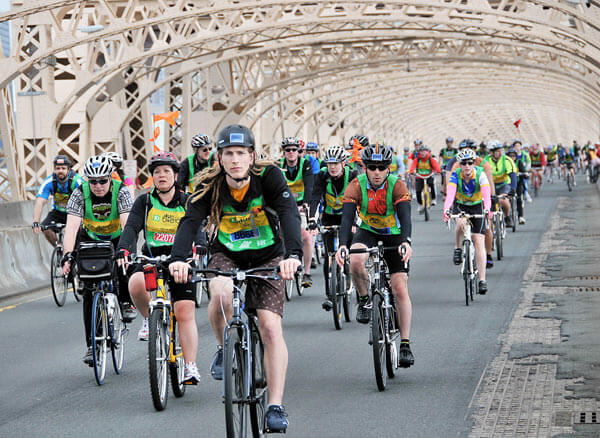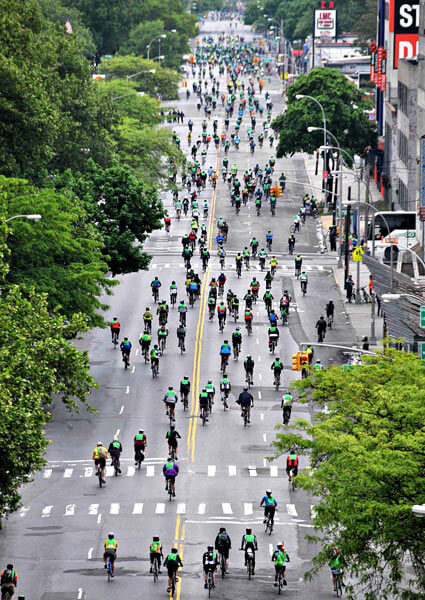By Rich Bockmann
The annual Five Boro Bike Tour will return to western Queens this weekend with a few restrictions put in place in the wake of the Boston Marathon bombings.
Participants in this year’s ride are banned from carrying backpacks, hydration packs or bicycle saddle bags. Water bottles, fanny packs and small bags up to 420 cubic inches will be allowed when the tour comes to Long Island and Astoria Sunday.
“Our hearts go out to everyone in Boston dealing with this tragedy,” Bike New York President Ken Podziba wrote on the event’s website. “At this time of sadness and uncertainty, we want to assure riders, volunteers and spectators of the upcoming TD Five Boro Tour that we are working closely with our partners in NYC government to ensure the tour will be a safe and enjoyable experience for everyone.”
After heading up Manhattan and tapping their toes in the Bronx, riders will head down the east side before crossing the Queensboro Bridge into Long Island City. From there they will ride up 21st Street to Astoria Park before circling back and heading down Vernon Boulevard into Brooklyn via the Pulaski Bridge.
Joani Emerson, co-owner of the Peak Bicycle Pro Shop in Douglaston, said she looks forward to the tour every year as the kick-off to the cycling season in the city. She said she did not think the events in Boston will stop riders from enjoying themselves this weekend.
“It will be in the back of my mind, probably as I’m going over the Queensboro Bridge,” she said. “It shouldn’t be too bad. It’s supposed to be a beautiful day.”
Dr. Gonzalo Vazquez-Cassals, a neuro-psychologist at Jamaica Hospital’s Traumatic Brain Injury Unit, wished the riders a fun and healthy tour and said he hopes he does not have to see any of them at work.
“The most important safety tip is to always wear a helmet whenever you ride a bicycle — any activity, really. The kids now ride scooters. I know they don’t like it, but wearing a helmet is the best safeguard we have now.”
The doctor, who said he regularly takes a spin around Juniper Park and the shoreline along Bayside, said cyclists have the highest rate of sports-related brain injuries and riders should be on the lookout for signs such as headaches, confusion, disorientation, dizziness, slurred speech, nausea, vomiting and fatigue.
He said cycling deaths dropped about 45 percent between 1994 and 2010 after helmet awareness and enforcement became popular.
“I’m 50 now, but when I was a kid and my parents told me to wear a helmet, I was most likely not going to listen, but during my early years working in the field I developed an awareness of the dangers,” he said.
Reach reporter Rich Bockmann by e-mail at rbockmann@cnglocal.com or by phone at 718-260-4574.

































